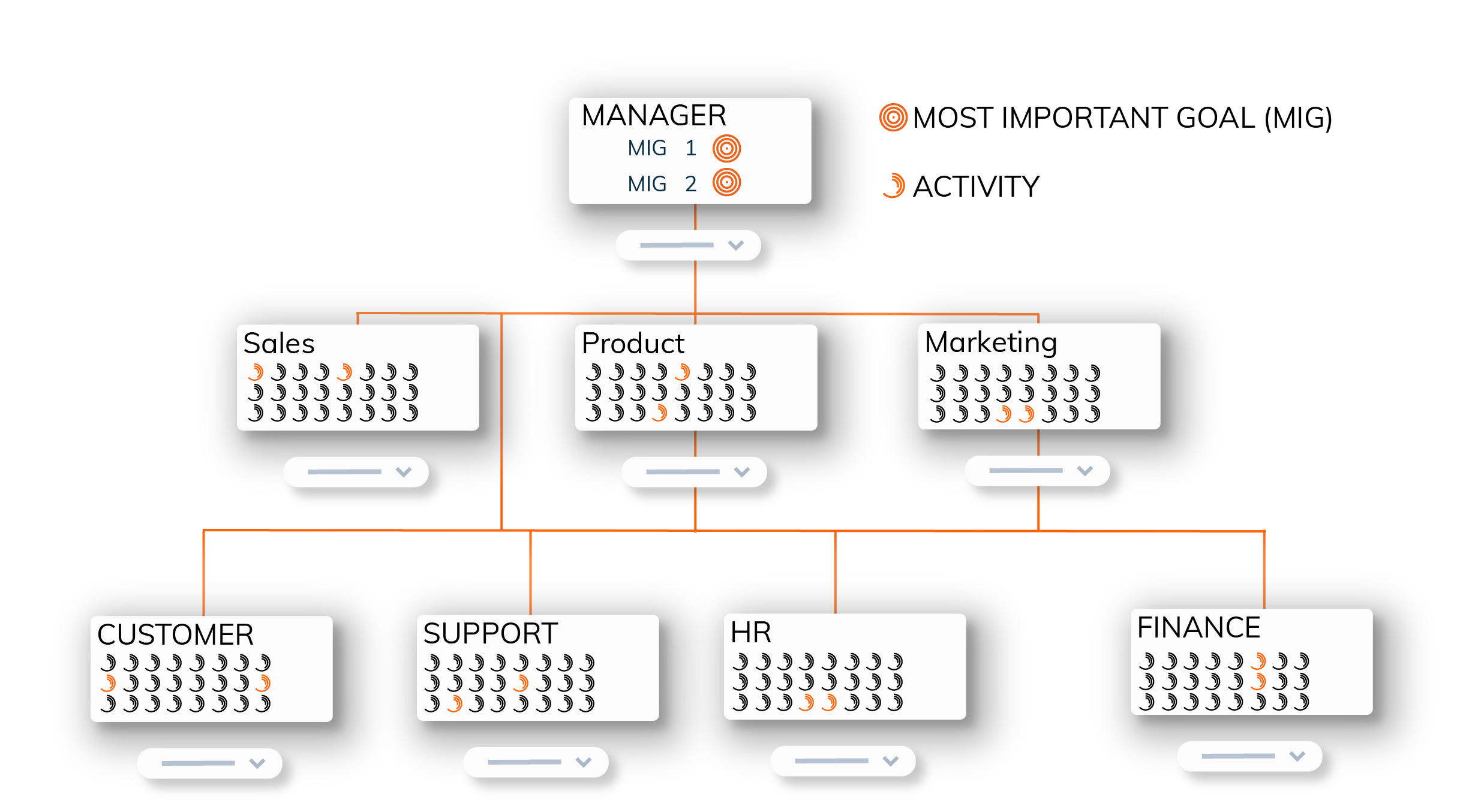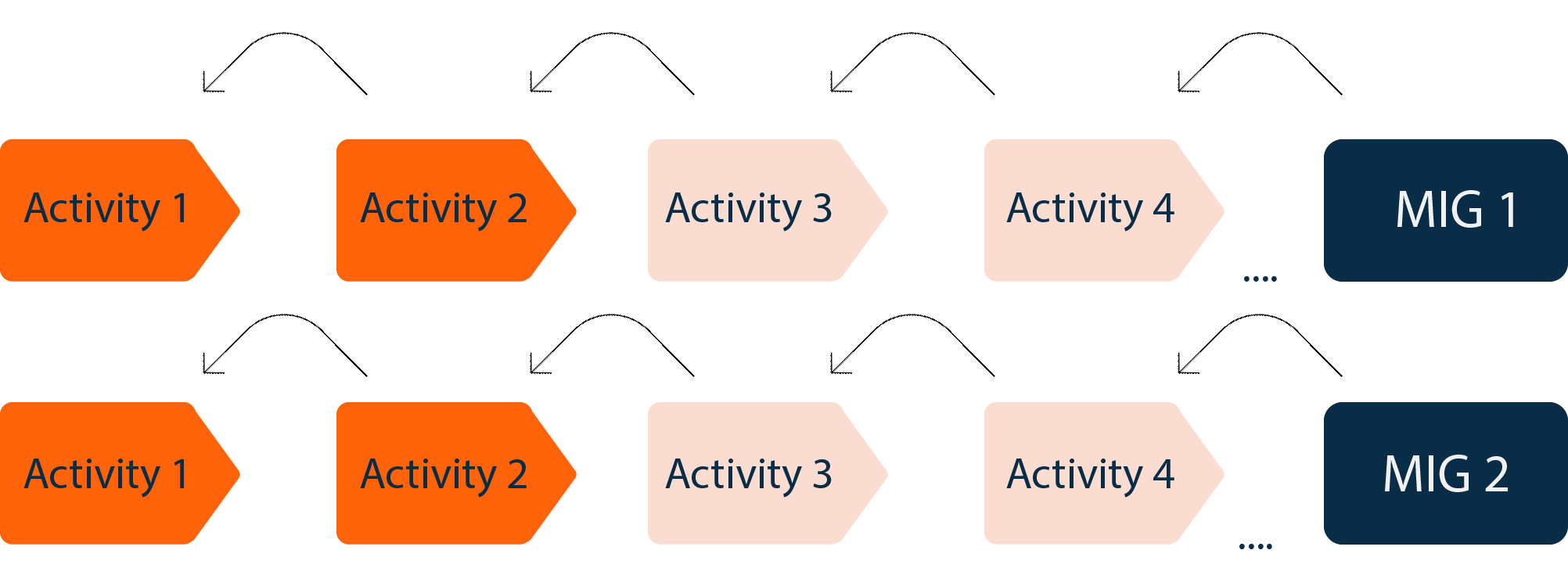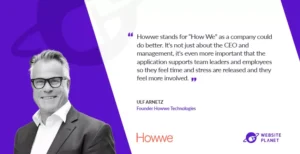In the Howwe Way of Working, we emphasize the importance of prioritizing two key initiatives and goals. This approach often raises questions about how to address the myriad of other responsibilities and objectives.
Achieving Success by Focusing on the Right Goals and Initiatives
t’s not uncommon for businesses to feel overwhelmed by the need to accomplish everything. However, this mentality is precisely what causes many organizations to flounder. The essence of strategy acceleration lies in concentrating on the right things. This doesn’t imply that everything else halts; rather, it suggests that low-value goals and activities are deprioritized in favor of high-value objectives.
Interestingly, we’ve observed that when companies adopt the three disciplines of acceleration alongside their top two initiatives, they often feel more productive overall. This increased efficiency stems from employees learning HOW to execute tasks effectively. As they witness progress, they become motivated, fostering a positive momentum.
The ultimate objective is not to complete a multitude of tasks but to focus on the right ones.

The diagram above demonstrates how CEOs and management teams create focus by selecting two Most Important Goals (MIGs). The orange activity icon within the boxes represents how different departments, teams, and employees all concentrate on achieving these MIGs. Imagine the powerful impact strategy acceleration can have within an organization when everyone is aligned and working toward the same goals.
Different time perspectives on the varied goals in the staircase
Regarding the timeline for working on a MIG, our advice is to avoid setting excessively long intervals. Goals that extend too far into the future, like those set five years ahead, can be challenging to relate to and maintain focus on. Breaking down long-term objectives into smaller, manageable targets helps to minimize the risk of losing focus. For example, a company aiming to double their revenue from $500M to $1B in three years could set annual milestones to maintain momentum.
How do you identify the right activities in order to achieve the MIG?
It’s crucial in strategy acceleration to identify and prioritize activities that are most important for achieving MIGs. A common pitfall is to identify too many activities, making it difficult to prioritize and decide on the most vital ones. By focusing on a maximum of two simultaneous activities per MIG, organizations can ensure steady progress without stagnation.
Each MIG at every level in the acceleration staircase can have a maximum of two activities, which must be the most important ones for an individual or team member to perform. These activities should be measurable, influenceable, and achievable for those who set them. This approach increases motivation and commitment, as each person identifies their own activities based on their responsibilities. Consequently, the strategy becomes integrated into daily work, and individual contributions become more apparent.
Defining activities that contribute to reaching goals may initially seem counterintuitive, but the key is to start from the end. First, establish the end goal (i.e., the MIGs) and then define the activities that will help reach those objectives most efficiently. Limiting the number of simultaneous activities to two per level in the staircase helps maintain focus and prevents any of them from being poorly executed.

The illustration describes how to define activities that will contribute to reaching the goal. It might feel a bit backward, but we say: Start from the end and define the end goal (i.e. the set MIGs)—based on this you start defining the activities that will bring you to the MIG the quickest. When activity one and two are done, new activities found to be the most important are formulated. Continue this way until the goal is reached.
This method offers continuous evaluation of what is most important at any given time, rather than deciding all activities upfront. By iteratively deciding on the most important activities first and choosing new ones after completing the initial two, organizations can adapt and evolve more effectively.
True behavioral change within an organization is an essential component of successful strategy execution. Traditional communication, workshops, and discussions often fall short in driving these changes. The acceleration staircase approach fosters genuine behavioral shifts by methodically breaking down goals to the individual level, involving employees in the process, and consistently monitoring progress.
Having worked with change processes for many years, this approach feels almost revolutionary. It addresses one of the most challenging aspects of organizational change: sustaining new behavior. When the strategy becomes an integral part of daily work, employees become more engaged and motivated, unleashing a tremendous amount of energy and potential. We have witnessed companies undergo remarkable transformations and achieve outcomes that initially seemed impossible. This is why we are so passionate about our work!
In conclusion, we hope to have clarified the concept of anchoring and its significance in strategy acceleration. It goes beyond traditional communication and can only be accomplished by involving all stakeholders in the process. People and their behaviors are the most crucial elements in executing a strategy, as they are the ones who carry out the work. Your employees are your most valuable resource in strategy acceleration.
Anchoring is not a one-time event; it requires continuous maintenance. Once it is well-established, it paves the way for further growth. In our upcoming blog post, we will discuss how to ensure that the activities mentioned here are executed and accelerated effectively.
By embracing the Howwe Way of Working and prioritizing the right goals and initiatives, organizations can create a powerful, unified focus that drives success. Harness the power of strategy acceleration by breaking down long-term objectives into manageable targets and concentrating on the most important activities. This approach fosters true behavioral change, increased motivation, and commitment across the organization, ultimately leading to extraordinary achievements and lasting success.
Anchoring through the Acceleration staircase creates a change in behavior
By now you know that a change in behavior within the organization is an important element to succeed with strategy execution. We have seen a number of companies invest time and money in communication, workshops, and discussions to make managers and employees change their behavior. Many fail and often money and energy are wasted. You cannot talk your company into a change in behavior — things have to be done to have any effect.
One of the most exciting things to see is a real change in the behavior of the employees. When this change occurs, the old way of working disappears and something new takes its place. It is always great to see! We have seen how the use of the acceleration staircase contributes to true behavioral change. By methodically breaking down the goals to the individual level, by involving the employees in the work and regularly follow up, you create the desired behavior and a higher degree of motivation.
Having worked with change processes for many years this feels almost revolutionary. Finally, a method that actually works in changing and sustaining a new behavior. Normally, this is one of the most difficult things to achieve. When anchoring is integrated within the organization, the strategy also becomes an integrated part of everyday work. It sparks engagement, desire, and willpower in people. The power that is freed up is enormous. We have seen companies transform in front of our eyes and people achieving things not even they thought were possible. This is why we really love our job!
Hopefully, we have managed to explain what anchoring is and why it is so important. That it is something entirely different from traditional communication and that it can only be achieved by involving everyone who is part of the strategy acceleration. We have explained why people and behaviors are the most important things in executing a strategy — it is the people in the organization that actually do the work. That is where it is decided whether you will succeed or not. Your employees are the most important resource in strategy acceleration. Anchoring is not permanent, it needs maintenance — but when it is well established it is time for the next step. In the next blog post, we will talk about how you can ensure that the activities that we talked about here are executed and accelerated





